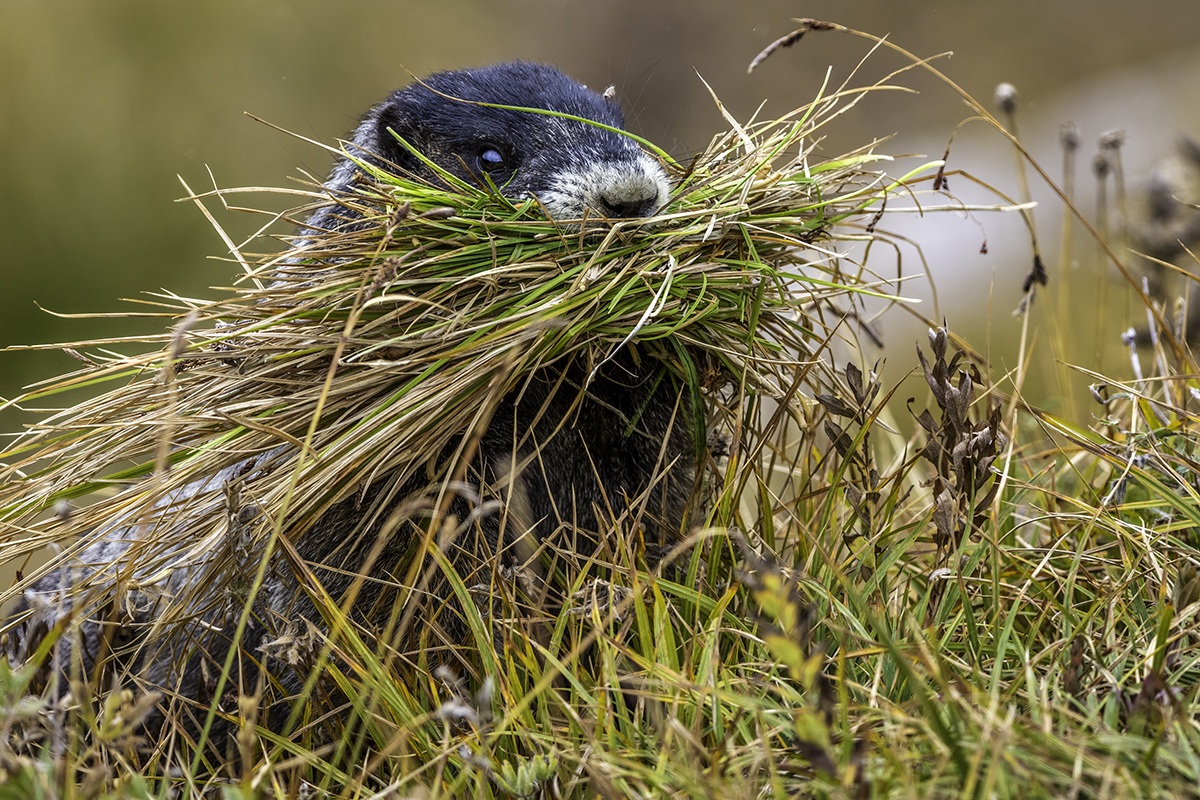Photo Closeup Friday – The Hoary Marmot
The hoary marmot (Marmota caligata) is named for the frost white fur on its head and shoulders. The piercing warning whistle of this eight- to twenty-pound rodent is often heard in high mountain meadows and talus slopes from northern Alaska to Washington, Idaho, and Montana. Hoary marmots are inquisitive creatures, and it is not unusual to see them interacting with playful or curious mountain goat kids.
The animal finds refuge from its main enemy, eagles, and other predators in burrows beneath boulders. But grizzly bears sometimes roll the rocks aside and dig apart the underground tunnels to get at the marmot, especially when it is in hibernation. Hoary marmots go into their dens as early as September and enter a dormant state. Their respiration rate and heartbeat become extremely slow, and their body temperature falls to a point only a few degrees above freezing They don’t emerge until June, nine months later. Even then they may still have to tunnel upward through a lingering snowpack to reach the light. Perhaps as an adaptation to the demanding alpine environment, hoary marmots are more sociable, than other marmots such as their common eastern relative, the woodchuck or groundhog. They live in colonies with comparatively little aggression between adults, and the young are not driven out when they mature. Maturity takes two years to reach, a long time by rodent standards. Such slow development reflects the extended hibernation period required to survive in this animal’s high-country niche.*
Find your own Marmot this July while they are out foraging! Join Art Wolfe’s Mt. Rainier workshop in July!
*Text excerpt from “The Kingdom”




